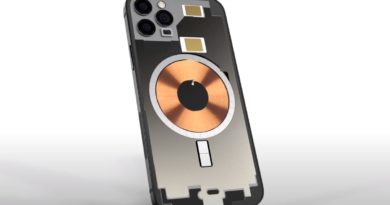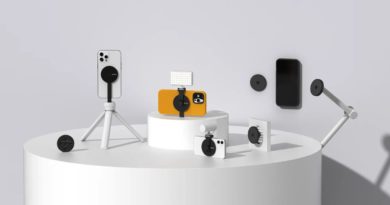Microsoft Surface Duo: Release date, price, features and more
Microsoft is getting back into the smartphone business, even if it insists that its upcoming Surface Duo device isn’t really a phone.
Part of the Surface lineup of devices, the Surface Duo is like a 2-in-1 laptop, only in miniaturized form. Its two screens open up on a hinge like a book to from a very big-screen phone. And since it can place phone calls, the Surface Duo will find itself competing with similarly sized smartphones, even with Microsoft’s marketing machine choosing to emphasize the Duo as a productivity device first.
Microsoft abandoned the phone business in 2017, after failing to win over both consumers and app makers from Android and iOS with its Windows Phones. Will the Surface Duo make a bigger splash when it finally arrives? And just what can you expect from this foldable phone?
Here’s what we know so far about the Surface Duo.
Surface Duo release date
When it previewed the Surface Duo in 2019, Microsoft said to expect a launch in time for the holidays — but not the holiday season that came and went last year. Instead, Microsoft has always targeted 2020 for a release date of its foldable phone.
Why such a big gap between the October 2019 reveal of the Surface Duo and its actual launch? Microsoft says it needs the time to work with developers to optimize their apps to take advantage of the Duo’s multiple screens.
However, Microsoft may have made significant progress on those efforts. A report from back in February claimed that the Surface Duo could be ready to ship this summer in limited quantities. That was before the COVID-19 outbreak derailed much of the economy, raising the specter of delays for a number of product launches. For now, let’s just assume the Surface Duo appears this year, until Microsoft tells us otherwise.
Surface Duo price: How much will it cost?
Microsoft hasn’t set a price for the Surface Duo just yet. We imagine that price will come into focus as we get closer to the phone’s release date.
Since the Surface Duo’s unveiling, other foldable phones have come along to give us a better idea of what device makers charge for this kind of product. At the time, we just had the Samsung Galaxy Fold, which debuted in 2019 at $1,980.
Subsequent foldable phone releases have introduced more affordable devices — or at least relative to a $2,000 price tag. The foldable Motorola Razr costs $1,500, while Samsung’s second crack at a foldable phone, the Galaxy Z Flip, goes for $1,380. That doesn’t really tell us anything definitive about Microsoft’s plans for the Surface Duo, but we’d suggest setting your expectations for a high price.
Another foldable device, the Galaxy Fold 2, is reportedly in development for a summer release. Its price is expected to be closer to the original Fold, though nothing’s definitive yet.
Surface Duo screens: How does it work?
The Surface Duo features a pair of 5.6-inch glass screens. Unfold the phone — it opens up like a book on a hinge — and you’ve got an 8.3-inch display to work with. There’s a bar running down the middle of the phone where the hinge is, so don’t expect a seamless display when the Duo is opened up.
You can run a single app across the Duo’s two panels; you also have the option of running two apps at once on the different screens. And Microsoft says you can use one screen as an input device for an app running on another screen — think an on-screen keyboard for composing messages or a controller for playing games.
In January, Microsoft put out a set of developer tools to show app makers how the Surface Duo will display their software. Some animations whipped up by designers give us a better idea of what life with the Surface Duo might look like.
In context – this feels even more magical. pic.twitter.com/8yLLoioE1KJanuary 22, 2020
The Surface Duo is pretty slim, at 4.8mm thin. Those who’ve gotten a chance to handle the phone say that it can fit into a pocket, though it’s probably a more comfortable fit inside a coat pocket like the Galaxy Fold.
How will the Surface Duo differ from other foldable phones?
The Surface Duo goes about things a little bit differently than foldable phones like the Galaxy Fold and Huawei Mate X. The Fold features a small outer screen, and when you open the device, you’ve got a seamless 7.3-inch display staring back at you. The Mate X folds inward on a hinge, but once you lift up on its outer covers, a seamless 8-inch tablet snaps into place. In other words, there’s no dividing line running down the middle of the Fold or Mate X like there is on the Surface Duo.
One rumor suggests a way the Surface Duo can handle notifications without an external display. A “peek” feature would show at-a-glance info on the right side of the Surface Duo’s display when you pop open the phone for a quick look.
There’s one more critical difference between the Surface Duo and those other foldable phones. Because glass doesn’t yet bend — not easily, anyhow — the Fold and the Mate X use plastic displays. The Surface Duo, which does all its folding via a 360-degree hinge, uses glass panels, much like the more recent Galaxy Z Flip which uses a layer of ultra-thin glass in its display for a much more polished look. Microsoft is banking that this will be a more elegant experience.
If you want to compare the Surface Duo to another dual-screen device, the most apt choice may be ZTE’s older Axon M, which also used glass panels that folded out. That’s probably not a comparison Microsoft would hope to invite, though — we found it clunky to use, and having a hinge running between two screens didn’t make the experience feel very immersive. We’re guessing that Microsoft has learned from those missteps.
What operating system will the Surface Duo run?
The Surface Duo will be an Android phone.
There are a couple of reasons why Microsoft opted for Android instead of its own operating system, and they’re pretty obvious when you think about it. For starters, that’s where the app makers are. Developers are already building apps in the hundreds of thousands for Android, and Microsoft — which got stung by app makers spurning mobile Windows the last time it tried to make a go of it with phones — knows that apps are the key to people using your hardware.
It also helps that Android 10 added support for devices with multiple screens, and Android 11 promises more foldable support when it arrives later this year.
Microsoft’s use of Android may also ensure that the Surface Duo arrives without delay. At the same event where Microsoft showed off the Surface Duo, it also previewed the Surface Neo, which is based on Windows 10X. (More on that dual-screen device in a moment.) With Microsoft deciding to put Windows development resources into single-screen Windows 10X device, the Surface Neo launch got pushed back to 2021.
What are the Surface Duo’s specs?
Microsoft said that the model we saw at its Surface event last October featured a Snapdragon 855 processor, but since then, the Snapdragon 865 appeared. It’s likely the shipping version of the Surface Duo uses that top-of-the-line chipset instead.
Another oddity with the Surface Duo Microsoft has shown off so far is that it seems to feature just one camera — it’s on the right display as you have the phone opened up. Presumably, if you want to take a photo, you’ll need to swivel that screen around so that the camera is pointing at your subject. That seems like a big hassle, especially considering how critical the camera has become to smartphones, so it’s very possible that design could change between now and when the Surface Duo finally ships.
At least that camera looks like it’s capable of taking good photos. Microsoft’s Panos Panay shared a photo captured with a Surface Duo in April, and the picture looks sharp enough.
The only other Surface Duo specs mentioned so far include a USB-C port and a fingerprint sensor.
How does the Surface Duo differ from the Surface Neo?
As noted above, the Surface Duo isn’t the only dual-screen device in Microsoft’s plans. Microsoft also is working on the Surface Neo, a 2-in-1 device with a pair of 9.8-inch screens. Like the Duo, the Neo features a 360-degree hinge, which allows the screens to swivel into different positions. The Neo features both a pen and keyboard that attach to the device magnetically. Unlike the Duo and its Android OS, the Surface Neo will run Windows 10X; the Neo has also been pushed back to next year.
There’s no price yet on the Surface Neo, and its specs are as shrouded in mystery as the Surface Duo’s are.
The fact that Microsoft is banking on two devices that feature a dual-screen setup underscores the company’s belief that there’s a future in dual-screen designs. It also indicates that Microsoft is very serious about this new form factor, even if it will be a bit before we get our hands on either product.


